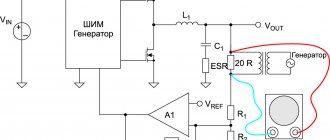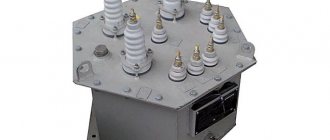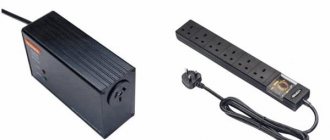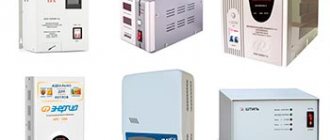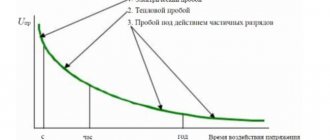Transformer oil is used in high-voltage equipment as an insulating medium, due to its higher electrical strength compared, for example, with gases.
But during operation of oils, their breakdown may occur, that is, loss of the ability to withstand high voltages. A breakdown creates a risk of failure of expensive electrical equipment: transformers, oil-filled cables, capacitors, switches, arresters, etc. To prevent breakdown, liquid dielectrics are tested to measure the breakdown voltage. In this article we will look at how breakdown of liquid dielectrics occurs, the reasons for the decrease in breakdown voltage and how transformer oil is cleaned and tested .
Breakdown of liquid dielectrics
The breakdown of liquid dielectrics is a complex phenomenon that is still being studied. One of the main theories of origin is as follows. If a dielectric (oil) is exposed to high voltage for a long time, and there are inclusions in the oil, then these inclusions are polarized and combined into chains that extend along the electromagnetic field lines. The circuits become a channel through which electric current flows. The current heats the liquid adjacent to the channel to a boil, and breakdown occurs through the resulting gas channel.
In thoroughly refined oils, breakdown can occur due to impact ionization of molecules. After a breakdown, the electrical insulating properties of the oil are restored, but its quality usually deteriorates noticeably.
Causes of equipment failures
However, even with constant supervision and inspections, it is not possible to avoid unexpected or, conversely, planned breakdowns and damage.
80% of all known causes of power equipment failure are caused by contamination and oxidation of transformer oil, that is, liquid insulation. Let's consider some of these reasons in conjunction with the prerequisites for breakdowns, that is, the influence of outdated oil.
The most common type of damage to general purpose transformers is damage to high-voltage oil-filled bushings into which moisture enters. The oil becomes moistened, its insulating characteristics deteriorate, as a result of which partial discharges can occur in the oil and breakdown occurs.
Another type of transformer failure is a violation in the voter contact system. They arise from improper adjustment of the contacts, subsequently the formation of an oxidized film on the contacts - products of aging of transformer oil.
The most severe consequences are caused by damage to solid insulation and transformer windings. Sludge and other deposits of contaminated transformer oil remain on the windings or insulation, causing its weakening with the occurrence of a creeping discharge and subsequent breakdown.
And finally, it is worth paying attention to the fact that there are also reverse processes: damage to certain systems associated with the content or supply of oil affects its oxidation and performance. For example, damage to the oil pump leads to the entry of metal particles and other impurities into the transformer oil
When rubber seals break, moisture enters the oil, which is one of the main catalysts for its aging. A malfunction of the oil level indicator leads to an unacceptable decrease or increase in the oil level, etc.
This is interesting: Automatic frequency unloading of AFC - purpose and principle of operation
Breakdown voltage of transformer oil
Checking the dielectric properties of oils is carried out by sampling and their subsequent analysis with determination of breakdown voltage, dielectric loss tangent, dielectric constant, etc.
Breakdown voltage is the minimum applied voltage at which a conducting channel is formed in the dielectric. Breakdown voltage is usually measured in kilovolts.
Another similar characteristic is also used - this is the electrical strength (breakdown voltage) of the dielectric. Physically, electrical strength is the voltage that must be applied to a sample for it to break down, divided by the thickness of the sample. Electrical strength is measured in kilovolts per millimeter.
When to check
The frequency of testing depends on the power characteristics of the units in which this material is used. Typically, samples are taken once every 4 months or before commissioning of new equipment.
The reliability of the results obtained depends on the conditions under which the test is performed. It is necessary to prevent the penetration of moisture from the air into the material. The container with oil is opened when the temperature of the composition is equalized with these air parameters.
For post-startup testing, testing is performed 5 times during the initial 30 days of equipment operation.
The flask must first be cleaned of contaminants. For greater reliability and to eliminate incorrect results, the liquid is taken from the bottom of the equipment container.
What factors influence the breakdown voltage of transformer oil
Breakdown voltage is a very sensitive parameter of transformer oil, since it can be influenced by various factors. Among them:
- contamination with mechanical impurities and moisture. The dirtier the oil, the lower its breakdown voltage;
- viscosity. Along with a decrease in the viscosity of transformer oil, the breakdown voltage also decreases;
- temperature. As the temperature increases, the breakdown voltage of the oil decreases. When a pulse voltage is applied, this connection is weakly expressed. For highly refined oils, the dependence of breakdown voltage on oil temperature is complex;
- pressure. As the pressure increases, the breakdown voltage increases, which is explained by the increase in pressure in the gas bubbles. The dependence is more pronounced in technically pure oil;
- duration of exposure to voltage. The longer the voltage is applied to the oil, the lower the breakdown voltage. The dependence weakens in oils with a deeper degree of purification;
- shape and area of electrodes, distance between electrodes. With different shapes of electrodes, fields of varying degrees of inhomogeneity are created, and the higher the inhomogeneity coefficient, the lower the breakdown voltage. As the area of the electrodes increases, the breakdown voltage decreases, and as the distance between the electrodes increases, it increases.
e) surface tension
The determination method is set out in ISO 6295, GOST 5985-79. The determination is to estimate the force (in mN/m) required to break through the oil-water interface in a metal ring under prescribed conditions. This force, associated with capillarity properties, changes depending on the composition of the oil and under the influence of oil decomposition products.
Surface tension depends on the degree of aging and the acid number and indicates changes occurring in the oil. The table shows the recommended minimum values for the oil in operation. A decrease in surface tension below the prescribed minimum values indicates profound changes in the physical and chemical properties of the oil due to its aging. In these cases, it is preferable to replace the oil rather than regenerate it.
Minimum surface tension values for oil in operation
| Rated voltage, kV | U {amp}lt; 35 | 35 {amp}lt; U{amp}lt; 70 | 70 {amp}lt; U {amp}lt; 150 | U{amp}gt; 150 |
| Minimum surface tension mN/m | 10 | 12 | 15 | 20 |
Transformer oil breakdown test
Oil breakdown testing , as a rule, is performed in the laboratory, but if you have the necessary equipment, you can measure the breakdown voltage near the transformer.
Testing transformer oil for breakdown is carried out in accordance with current standards. These can be either national standards of the countries in which transformers are operated, or international standards. The most commonly used are IEC-60296 BDV Tester and ASTM BDV Tester.
Oil breakdown test device
GlobeCore provides world-class quality equipment in the transformer service industry, including laboratory instruments for testing liquid dielectrics . Among them is the TOR-80 oil breakdown test apparatus . It works on the principle of gradually increasing the voltage on the secondary winding of a high-voltage transformer from zero to the maximum value or to the value at which dielectric breakdown occurs. The high voltage shutdown time after a breakdown does not exceed four microseconds. In terms of this indicator, transformer oil testing unit surpasses all existing devices for similar purposes. The oil in the measuring cell does not have time to burn and change its chemical composition, which provides the same conditions for repeated measurements.
In terms of other characteristics and parameters, the best BDV tester GlobeCore is not inferior to any of its known analogues. In the TOR-80 settings, you can select any of the current standards for electrical test methods (IEC 60156, ASTM D877, GOST 6581, etc.). Even if the standard has changed over time, the user can quickly make the necessary adjustments and continue testing the oil using the current algorithm. Therefore, the inexpensive BDV tester can be used in any country in the world. It is also used to test liquid dielectrics of various origins with a breakdown voltage not exceeding 80 kilovolts, made from petroleum, vegetable oils or obtained synthetically.
The device has compact dimensions: width – 49 centimeters, length – 32 centimeters and height – 30 centimeters, as well as handles integrated into the body, with which it can be easily moved inside the laboratory or transferred from one room to another.
The process of oil breakdown testing is simple. An employee of an electrical engineering laboratory needs to connect the device to the power supply, insert the measuring cell, fill it with oil, select the required standard and start the process by pressing the appropriate button. BDV tester the rest automatically, after which within five minutes the result of the first measurement of the breakdown voltage in kilovolts will appear on the display.
The measurement error of breakdown voltage after a test cycle does not exceed one percent. This accuracy is achieved through technologies developed by GlobeCore and new industry standards.
At the same time, the device remains convenient and practical. If necessary, the measurement results can be printed on the built-in thermal printer or the accumulated data array can be transferred using a flash drive from the internal non-volatile memory to a computer for subsequent statistical processing and visualization.
If the operating rules are followed, the use of TOR-80 is safe for laboratory personnel. The top cover not only protects the samples and work area from contamination, but is also equipped with a position control device. When the cover is in the “open” position, the rise in test voltage is blocked and electric shock is excluded.
Before being sent to the laboratories of electric power companies, all devices are checked to ensure compliance with technical requirements and characteristics by testing real oil samples, for which no less than 900 measurements are taken, which is equivalent to 150 test cycles, as well as checking using high-precision kilovoltmeters.
Testing oils using GlobeCore allows you to quickly identify a critical decrease in breakdown voltage and quickly make a decision about replacing or cleaning the oil.
Dielectric Strength Measurement
In practice, dielectric strength measurement
usually replaces breakdown voltage measurement. It involves the use of a high-voltage transformer, a measuring cell made of insulating material, two electrodes and the transformer oil to be tested. Oil is poured into the cell, after which the voltage on the secondary winding of the transformer is gradually raised until a breakdown of the oil channel between the electrodes occurs. Several measurements are performed intermittently, which are then processed by statistical methods to obtain the final value of the breakdown voltage.
Different countries may have different standards for measuring breakdown voltage. But the algorithm remains the same as stated above. There may be differences only in the shape of the electrodes, the distance between the electrodes, breaks between adjacent measurements, etc.
Continuous BDV test in stream
In addition to laboratory analyses, of practical interest for transformer owners and service organizations is the ability to determine the breakdown voltage of the oil online, that is, without sampling. GlobeCore company produces an online BDV tester, or more precisely, an entire diagnostic system TOR-5 , which allows you to determine important parameters of transformer oil. TOR-5 is installed near the transformer and connected to it. Once connected, the oil continuously circulates in a closed circuit through the sensors. Sensors measure important oil parameters. In addition to the fact that these parameters themselves are diagnostic information, additional indicators are also calculated from them, which give a more complete picture of the condition of the transformer oil online. One of the calculated indicators is the breakdown voltage of the oil.
All measured and calculated parameters are accumulated at a frequency of once per minute and are available for viewing and analysis in a special web application, which can be opened anywhere in the world if you have access to the Internet.
Abbreviated chemical analysis
This test procedure includes:
- Quality check based on the appearance of the sample taken . This rapid analysis can determine the presence of water and sludge.
- Determination of breakdown voltage . We will consider this test separately.
- Determination of acid number . This test is carried out in a special laboratory; we will not discuss the technical side of the analysis, since it is of interest only to specialists. What this indicator reflects was described above.
- Flash point determination. In modern special laboratories, automatic instruments are used for this purpose, allowing the ignition temperature of oil to be recorded over a wide range. In particular, the device shown in the figure below is capable of measuring the ignition temperature in the range from 40.0°C to 370°C.
Automatic flash point recording device TVZ-LAB-11 - An analysis called the “water extract reaction” . Using this method, you can determine the presence of alkali and acid in the sample taken. The oil is considered to meet the standard if the reaction shows a neutral result.




